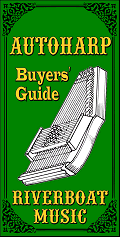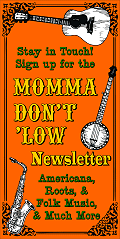

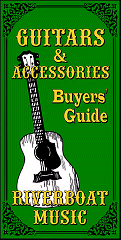
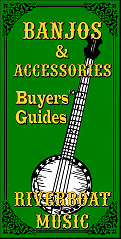
|
 Introduction to Bowed Psaltery Introduction to Bowed Psaltery
This sweet-sounding, ancient-looking instrument is very useful for many kinds of music, including the kinds of Folk, Celtic, and "Old-Timey" tunes I love and often perform. It's comparable to autoharps and dulcimers, for allowing you to produce good-sounding music quickly, and to advance beyond the basics as much as you want to.
Personally, I acquired a "home-made" bowed psaltery decades ago, but at the time, there was almost no information online, and I was working two jobs, so it mostly gathered dust.
A few years ago, I picked up a used Unicorn Strings psaltery. At the time, they were still in business, and I found the builders to be very helpful.
But the Unicorn Strings information only went so far, and the makers went out of business about a year after I bought mine. As I tried to learn more about bowed psalteries, most of what I found online were "educated guesses" from folks in the same position as me: with a cool instrument and very little support, forced to figure everything out for themselves.
As a (former) professional researcher, writer, and fact-checker, I began picking up more examples from online auctions, and trying everybody's "advice" to determine whose opinions had weight, and who was just doing ther best.
After a lot of research and trial-and-error, I'm still learning the instrument myself. But I thought I would put together some "reference" information, so other newbies wouldn't have so much trouble just picking up general information about the things.
Origins
Psalteries in general go back thousands of years, but modern psalteries that could be played with bows only go back to the early 1900s. (A related instrument, the Bowed Zither dates back to 1823. It differs by being fretted and played in the lap like an Appalachian dulcimer.)
One common (but now discontinued) version was the "Ukelin," which emerged in the 1920s. It had strings you could play with a bow as well as strings you could strum to make chords.

If you're interested in ukelins or have come across one, you can find more information here:

Modern Bowed Psalteries
The modern, triangular bowed psaltery was likely developed in postwar Germany for use in public school music programs. In a sense, you could consider them the stringed-instrument equivalent of the soprano recorder, except that when a bowed psaltery is tuned it plays in tune.
In the years since bowed psalteries were introduced, they have evolved from simple teaching tools to sophisticated musical instruments, which are played in a number of styles.
Bowed Psalteries vs. Violins - Most people can't play notes on bowed psalteries as fast as violin players can play notes on their violins. And unless you use two bows, you can't play two notes at the same time like fiddle players do.
But the tone is comparable, playing in tune is much easier, and the notes ring longer after you've finished bowing them, which can contribute to a haunting tone. Frankly, I'm surprised you don't hear more of them from Folk and Celtic-style groups.
Diatonic Bowed Psalteries -  . "Diatonic" bowed psalteries are the simplest version. They have no sharps or flats, so you'll see only one row of pegs, usually down the "right" edge. . "Diatonic" bowed psalteries are the simplest version. They have no sharps or flats, so you'll see only one row of pegs, usually down the "right" edge.
This one is a student instrument built by Westman Instruments of West Virginia. It has very nice tone, in spite of its dinky size. The Westmans have made many bigger psalteries, too, in case you wondered.
Chromatic Bowed Psalteries - "Chromatic" bowed psalteries have sharps and flats. Most often the "natural" keys (like the white keys of a piano) are arranged along the right edge of the instrument, and the sharp and flat keys (like the black keys of a piano) are arranged along the left edge. You'll see gaps there, just like there are gaps between the clusters of black keys on your piano.

Usually the strings are all 10-gauge wires similar to guitar strings, which makes replacement strings easy to find. A few have 12- or 14-gauge wires for the deepest notes. The way they fasten on the instrument varies from brand to brand, though.
Bows: Psaltery bows use horsehair, like violin bows, but they are usually shorter. Some stretch the horsehair out by the tension of bent wood, like an archery bow, some include a violin-type peg for screwing the strings tighter, and some have the horsehair under tension from the factory. Each builder has a preference, but the bow from one brand can be used on almost any other with no downside.
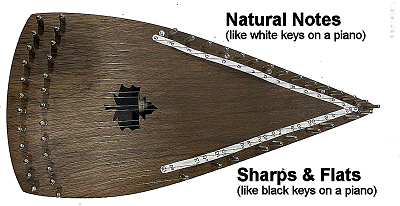 "Left-handed" Psalteries - Unlike a violin, where both hands are critical, a bowed psaltery relies chiefly on one hand, at least when you're starting out. So a version for "lefty's," like the Westman bowed psaltery on the right, makes sense. "Left-handed" Psalteries - Unlike a violin, where both hands are critical, a bowed psaltery relies chiefly on one hand, at least when you're starting out. So a version for "lefty's," like the Westman bowed psaltery on the right, makes sense.
Though you seldom find these ready-made, any builder who offers custom instruments can easily provide you with one.
Sizes
Nearly every bowed psaltery builder has designed his own instruments based on personal preference, so there is no standard. This caught me by surprise, when I ordered a "soprano" gig bag, and it only (barely) fit one of my smaller, home-made psalteries. Turns out that almost all of the other psalteries I've come across count as "alto." In fact, I would suggest that "alto" is the true "standard," applying to Unicorn Strings and dozens of others over the years.
Generally the size is dictated by the number of strings. Psaltery player Quinn Golden suggests this general breakdown
- A "Soprano" generally has 15 or fewer strings, which allows them to be relatively short, often 20" or less. The smaller ones are especially helpful for children or adults with short arms.
- An "Alto" bowed psaltery generally has 24 strings, good for two chromatic octaves. In most cases that puts them in the 22-24" range. If you don't have specific needs that would steer you away from this class of psalteries, it's generally the best place to start.
- Some folks call a psaltery that has 2 1/2 octaves (~32 strings) a "tenor," though I see them listed as "altos" as well. They're often a little longer than 24-string psalteries, maybe up to 27", though I have two 32-string psalteries that have just squeezed in more strings on an "alto-sized" body. If your arms are long enough, a "tenor" could also be a good place to start.
- Below that are "baritone" and "bass" psalteries, which may have more strings (say, three octaves), or they may just be longer and lower pitched. Again, there are no set standards.
Shopping
Aside from Unicorn Strings (now discontinued), there have been few brands that have been reliable and in business for more than a decade. So even though our Riverboat Music Buyer's Guide points out reliable brands currently being manufactured, you're likely to come across other brands and "one-offs" that are worth consideration.
It seems as though at any given time, a few brands are available from major vendors and established manufacturers. There are also craftspersons who do such quality work that they get a good reputation, even though they may only make a dozen (or less) a year.
But at the same time, many worthwhile instruments have been built by "cottage industries," by woodworkers who dabbled, or built from kits. Building bowed psalteries isn't exactly rocket science after all.
What this means is that most used bowed psalteries you will encounter will get you off to a good start, even if they're not from a known builder, or even entirely free of flaws. Just don't spend more for an off-brand or one-off than you would spend for a "name brand" instrument, even a discontinued one.
In fact, my first bowed psaltery was definitely "home-made," but it is playable to this day, and has a sweet tone because it was made with good materials.
Some folks will tell you that it's not worth "wasting time" with less than a professional-quality psaltery. The truth is, you can learn on any psaltery that is reasonably resonant and holds its tune. And as you advance in your skills and train your "ear," you'll be better equipped to choose the next one if you ever upgrade.
Though my psaltery purchases have been fairly random, and have included some obvious home-made examples, I have yet to come across one that I would consider too poorly made to learn and make good music on. In some cases, the difference between one maker and the next comes down to minor issues, and sometimes it comes down to taste. One is louder, one is "sweeter" in tone, one is "richer," and so on. I still don't actually have a favorite, though I have instruments from at least six different makers.
That said, there's value in comparing prices, especially on the used market - some folks will ask three times as much as other folks for the same instrument. Since only a relative handful are on the market at any given time, they might get away with it.
Current and Recent Builders - Our Riverboat Music page includes much if the information from this page, but also includes brief lists of current and recent builders whose psalteries have a good reputation.
When Shopping for Used Bowed Psalteries:
- Look for quality workmanship, such as all the pegs installed at the same angle, smooth joints, no cracks, etc.
- Spruce and cedar are often preferred for the face, though I've heard some nice ones made with other woods such as walnut.
- The "pin blocks," the areas where the pins go in, should be hardwood. In most cases you can see a smooth joint between the face and the block. If the entire instrument is hardwood (such as the Westman walnut instruments, the joint will be harder to see, but it's there. In some cases, the pin blocks are several layers of hardwoods laminated together. That may be less attractive but more solid. You may not always be able to tell what the pin blocks are made of, but don't let signs of lamination put you off.
- A quality bow is also important. Generally if you buy a bowed psaltery from a manufacturer, you'll get a bow that is comparable in quality. Most folks prefer real horsehair, and it helps if the "hair" is thick and lies flat against the strings like a violin bow for maximum friction. Length is a personal preference, though 12"-15" lengths are common.
- Accessories - You'll also need rosin, a tuning wrench, and a case or "gig bag," but you can buy those separately.
- A block of rosin is a few dollars from any music store that sells violins.
- A tuning wrench for autoharps will cost in the $8-20 range and will work on most bowed psalteries.
- A case or gig bag will cost you more, from $50 up as a rule, so if the psaltery you're looking at already has a good one, take that into account as you're pricing it out.
Tuning
Most bowed psalteries have two or two and half octaves.
And most of them come with some sort of guide you can use when you're starting out that shows you where the notes are.
 The tuning tool for these is pretty much the same as the tuning wrench used by autoharp players. You'll want one that doesn't have too much wobble when it's in place. And don't buy the cheapest ones you can find - some cheap tuning wrenches will actually deform under use, and eventually damage your tuning pegs if you keep using them. The tuning tool for these is pretty much the same as the tuning wrench used by autoharp players. You'll want one that doesn't have too much wobble when it's in place. And don't buy the cheapest ones you can find - some cheap tuning wrenches will actually deform under use, and eventually damage your tuning pegs if you keep using them.
About Scales on Bowed Psalteries - Many folks would assume that a two-octave instrument would be from C to C. But countless songs in C (especially Folk songs), start on low G. So, many psalteries use a C scale but are tuned from G to G. Unicorn Strings psalteries start on low F. Believe it or not, such adjustments make psalteries more useful for more songs, even pop songs.
Generally, the sharps-and-flat side is tuned like the black keys on piano, with the lowest cluster of three strings being F#, G#, and Bb. But that's not universal, so if you have access to the owner's manual or web page, you might want to check that before you get out the tuning wrench.
When Tuning:
Try not to touch the strings.
If it's way out of tune, you should consider wearing eye protection or at least hold it away from your face.
I generally tune to a piano first, then tune to a digital tuner - some digital tuners struggle if the string is way out of tune. Be certain you're playing the string you'r tuning as you play it - it's possible to be tuning the wrong string altogether and overtighten it until it snaps. Again, try not to touch the strings. If you want use a pick to pluck the strings while you're tuning them, that's fine.
If it started out way out of tune, you may have to tune it twice before it holds its tune. Or in the worst case, come back a few hours later and tune it again. But if it's still holding its tune by the next day, you're probably good for a while, depending on storage, humidity, etc. (For example, very high humidity may cause the psaltery to go flat faster, but very low humidity may cause damage to the wood, so be aware of how it is stored or displayed.)
Before Playing with Others - If you're going to be playing with someone else, be sure to check the tuning first - some psalteries can drop a whole pitch, but still sound good by themselves because all of the strings have gone flat the same amount.
Playing
The bow on 90% of the bowed psalteries that turn up at thrift shops or auction sites has not been properly rosined. Which is to say that they're otherwise fine instruments that sounded like the devil's part in "The Devil Went Down to Georgia" when the first owner tried them. "Bill, why did you burden me with this diabolical device? It's out of here!"
Rosin the bow by drawing it firmly across the rosen block in an X pattern. A new bow will take a few minutes. Do not touch the horsehair - oil from your hands will make that part slippery.
When drawing the bow gently across any string gives a sweet, pleasing town, you probably have enough rosin.
 When you pick up the psaltery to play, most people suggest holding the skinny end with your left hand and bracing the fat end somewhere around your waste or lower ribs. If that feels awkward, you might try bracing it against your shoulder or upper left arm. Or even on your shoulder like a violin. When you pick up the psaltery to play, most people suggest holding the skinny end with your left hand and bracing the fat end somewhere around your waste or lower ribs. If that feels awkward, you might try bracing it against your shoulder or upper left arm. Or even on your shoulder like a violin.
People who use two bows at a time figure out how to hold it in their lap or on a stand or table.
In other words, there are common practices, but the only hard-and-fast rule is that you should be comfortable playing it.
Hold the bow a third of the way from the fat end (if there is one), and gently draw it across any of the strings, pulling it up while the string is still vibrating, before you run out of bow. Try that on several of the strings. If it still sounds "screechy," add a little more rosin. Don't worry about the rosin dust accumulating on the face of your psaltery - it wipes right off.
Again, if your psaltery came with some sort of guide to the notes, don't feel bad about using that. Or even making your own if you've lost yours.
If your psaltery came with an instruction booklet, that will usually have a few tunes to get you started. Try playing by going back and forth with the bow. Even though it may be hard to get used to at first, you'll be able to play much faster and more gracefully in time.
In addition, if you come across an instruction book for another brand or model of psaltery, that will be useful, too, except for the part about tuning - many models are tuned differently from each other.
Playing Tunes - If you can read music, you can play pretty much any part that is written out as a solo. For example, in a "Piano-Vocal" arrangement, you can play the vocal part.
In a hymn book, you can play the top line - the sopranos almost always have the melody.
If you can't read music, you might try finding a copy of a book written for bowed psaltery or Appalachian dulcimer that has the note names under the staff.
Here, for example, is the first tune in the Unicorn Strings bowed psaltery manual.

Roll Your Own
Several folks who have built and sold these professionally have also taken time to document their process, which has in turn inspired other folks. A few examples of these instructions are below:
More Resources
Conclusion
Like most of the articles on our HarpersGuild and CreekDontRise pages, this article came as a result of reader inquiries, and discovering that much of the "information" on these things was either patchy or unreliable. So I've picked up a few different pieces to make certain what I was writing about them was correct and tracked down what seem to be the most reliable sources of information.
That said, if you have a correction or a question, please contact me and I'll be glad to hear from you.
Also, if you make or play bowed psalteries, and want to provide additional information, corrections, etc. we'd be glad to hear from you.
 Whatever else you get out of our pages, I hope you come away with some great ideas for "sharing the joy." Whatever else you get out of our pages, I hope you come away with some great ideas for "sharing the joy."
And please stay in touch!
- Paul Race






|  > > |


